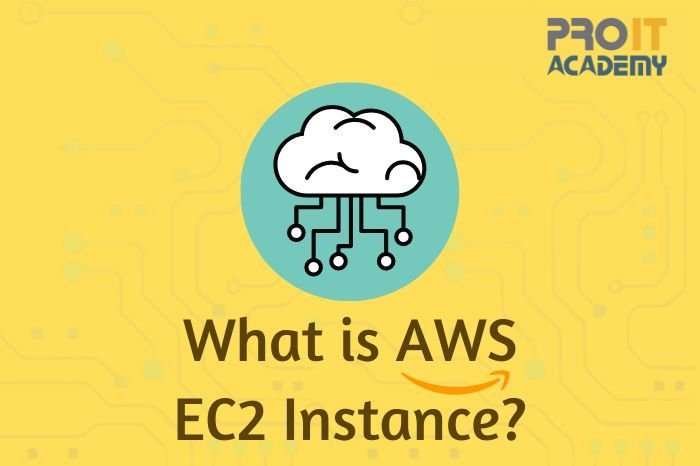Elastic Compute Cloud is what EC2 stands for. It is an Infrastructure as a Service (IaaS) offering from Amazon Web Services that makes it easy for developers to use computing resources in the AWS cloud.
AWS has 275 “instances” of EC2, each with a different CPU, RAM, storage type, and network performance. The instances are put into groups called “instance types” that are best for different kinds of computing work. Since there are so many choices, it’s smart to keep an eye on your EC2 workloads to ensure they run well and save money. In this blog, we’ll keep you updated on everything related to AWS ec2 Instance, including what is an instance in aws, what does amazon ec2 provide, what is amazon ec2 instance, what is reserved instance in aws and so on. So stick with this information.
What Is EC2 in AWS?
Amazon EC2 is short for “Amazon Elastic Compute Cloud.” Amazon EC2 is one of the most popular and basic services on Amazon. If you are new to AWS, it makes sense to start with EC2.
An EC2 machine is a computer with an operating system and hardware parts that you choose. But there is a big difference: it is all virtualized. You can use a single piece of hardware to run multiple virtual computers.
One important part of the AWS ecosystem is Elastic Compute Cloud (EC2). EC2 lets AWS’s cloud offer scalable, on-demand computing power.
With Amazon EC2 instances, you don’t have to pay for hardware upfront, and you don’t have to take care of any rented hardware. It lets you build and run programmes more quickly. You can start as many virtual servers as you need with EC2 in AWS. Also, you can scale up or down based on how many people visit your website.
The word “elastic” in “Elastic Compute Cloud” refers to the system’s ability to adapt to different workloads and add or remove resources based on demand.
Now you know what is Amazon EC2, what does EC2 stand for and what AWS EC2 stands for, let’s proceed further.
What Exactly Is Instance?
On Amazon EC2, apps are run on a virtual server called an instance. It can also be seen as a smaller part of a big computer with a network connection, hard drive, operating system, etc. But none of these services is real. In practice, you could have many small computers on one machine. These small computers are called “instances.” Let’s look at an example to see how they differ from services.
- EC2 is a service that can be used with other Amazon web services, such as S3.
- EC2 is used as the instance when we use it with other services.
Now you are aware about what are instances in aws, and what is an instance in AWS. Let’s move forward.

What is EC2 Used For?
Now that we are informed of what is EC2 Instance let’s go on and discover why we require Amazon EC2. There are several advantages to using AWS Elastic Compute Cloud; let me give you a summary of what I will cover.
- Auto-scaling
- Pay-as-you-go
- greater dependability
- Elasticity
For Auto-scaling
This advantage compels most companies to choose AWS EC2 as their cloud provider. It has already been explained how Netflix utilises Amazon EC2 auto-scaling to its favour and provides an experience free from crashing earlier in this article.
The provision of resources by demand is the essence of auto-scaling. They will either scale up in response to an increase in demand or down in response to a fall in demand.
For Pay-as-you-go
You will be charged hourly, and you will only be required to pay for the time you have used. On a typical day, a corporation like XYZ might use 100 servers, but on Mondays, they might use only 50. Therefore, during those days, it will only have to pay the regular charge for using 50 servers rather than the typical fee for using 100 servers.
Even if you only use the services provided by your Amazon EC2 instances for a few hours, you will only be charged for the period in question and nothing more.
For Greater Dependability
When your company is growing, the fact that AWS is located in 20 different regions worldwide and has 61 different availability zones (AZs) is beneficial. In addition, this will boost the pace at which your application loads everywhere in the world.
You can always store several copies of your app in multiple AZs. This ensures that even if one of your data centres experiences a failure or loses data, the app will not fail.
For Elasticity
You might rent a single machine with a high configuration and an operating system for your application rather than purchasing ten machines with a common configuration. The name “Elastic Compute Cloud” was derived from the character known as “elasticity.”

Book Your Time-slot for Counselling !
Types of AWS EC2 Instances
The AWS EC2 instance types determine the hardware that underlies the launched instances.
There are various AWS instance kinds, each with a unique configuration and set of advantages.
- General purpose
- Compute-optimized
- Memory-optimized
- Accelerated Computing
- Storage optimized
General Purpose Instances
General-purpose instances offer a balance of computation, memory, and networking resources and can be utilised for various applications.
A1 Instances
A1 instances are utilised in software applications because they are compatible with scale-out workloads and perfectly harmonise with the Arm ecosystem.
M5, M5a, and M5d Instances
These instances provide the optimum cloud architecture by striking a balance between computing, memory, and available networking resources. It was possible to put it to use in a wide variety of contexts.
T2 and T3 Instances
These instances allow you to speed up or slow down the performance of the CPU.
Compute-optimized Instances
Applications that rely heavily on computation and necessitate high-performance processors can benefit from using these instances. The following are some of the applications that are a good fit for them:
- Batch processing responsibilities
- Web servers with outstanding performance
- Performance-based computing (HPC)
- Scientific modelling
- Servers dedicated to gaming and ad-serving engines
The instances that fall within this category are the C5, the C4, and the C5n.
Memory-optimized Instances
These instances are designed to give a high level of performance to process huge data sets in memory.
Memory efficiency has been improved across R4, R5, R5a, and R5d instances.
Accelerated Computing Instances
These instances are the most recent generation of general-purpose instances, and as the CPU clock rate increases, these instances’ performance is accelerated.
Instances for accelerated computing are located at P3, P2, G3, and F1, respectively.
P3 and P2 are examples that can be used for any purpose.
Applications that rely heavily on graphics should use G3.
Storage-optimized Instances
Workloads that need to be written into memory and demand high read and write access sequentially are ideal for storage-optimized instances. These instances are designed to handle very large data sets.
Want to start your career as an AWS Certified Professional? Check out AWS Training in Pune
EC2 Vs. S3
Amazon Elastic Compute Cloud (EC2) and Amazon Simple Storage Service (S3) are essential services that enable developers to make the most of the AWS cloud. The most significant distinction between Amazon EC2 and S3 is that EC2 is a computational service allowing businesses to operate cloud servers.
S3 is a storage service. While S3 is an object storage service, it communicates with Amazon Web Services (AWS) over the Internet to store and retrieve data. S3 is analogous to a massive hard drive in the cloud, whereas EC2 also provides processing power and memory in addition to storage space. Many developers rely on both of these services for their cloud computing requirements.

Do you need help to create your career path ?
Features of Amazon EC2 Instances
Many of the features of Amazon instances, including storage, virtual processors, memory available to instances, and so on, can be customised. The following is a list of some of the features that are included in the Amazon EC2 instance:
- Flexible IP Addresses
It is possible to move it from one instance to another without requiring the assistance of a network administrator. This is helpful in situations where numerous servers are running simultaneously, such as when load balancing is being done, in failover clusters, or for any other purpose.
- Operating System
Linux, Microsoft Windows Server, CentOS, and Debian are operating systems that can be used with an EC2 instance.
- The Amazon CloudWatch Service
Data from the past and gathered in current times can be collected, stored, and analysed with its help. The CloudWatch service from Amazon Web Services (AWS) makes it possible to monitor all cloud services and applications hosted on AWS. In addition, it actively monitors applications, which helps to enhance resource consumption, optimise expenses, and scale up or down as necessary.
- Durable Storage
Block-level storage volumes can be joined to EC2 instances and used as hard drives, thanks to the Amazon EBS service. EBS makes it feasible to attach EBS volumes to numerous instances and raise or decrease the amount of storage accessible to an EC2 instance.
- Pausing and Restarting Instances
It is simple to pause an EC2 instance and then resume it from the same state later. If too many instances are operating simultaneously, it is possible to halt them all without incurring any further costs.
- EC2 Fleet from Amazon
Amazon EC2 Fleet functions as a singular virtual server that facilitates the deployment and management of several instances. In addition to this, it offers a programmatic interface (API) for accessing fleet activities. In addition, Fleet management can be included in the management solutions that are already in place.
- Examples of Bare Metal
The physical resources, including the processor, storage, and network, make up the virtual server instances. They run no OS and are not virtualized.
- Scaling Automatically
With automated scaling, Amazon EC2 virtual servers can add or remove capacity based on applications’ needs. Auto Scaling adds more capacity so that a product launch can handle a temporary rise in traffic.
The Bottom Line
I hope that you found this Amazon EC2 tutorial to be helpful. You have the option to educate yourself on cloud services, which may assist you in determining whether or not moving your operations to the cloud is the best option for your company. To accomplish this, sign up for the AWS class offered by ProIT Academy. In this class, you will learn everything there is to know about the AWS EC2 instance.












